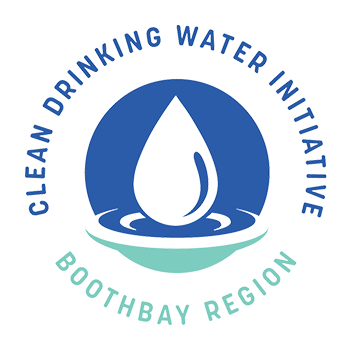*Bigelow Laboratory for Ocean Sciences, Boothbay Region Land Trust, Boothbay Region Water District, Boothbay Region YMCA, Coastal Maine Botanical Gardens, Knickerbocker Lake Association, and the towns of Boothbay, Boothbay Harbor, and Southport
- Four of the peninsula’s major nonprofits, a lake association, three of its towns, and the municipal water utility have partnered to preserve our limited and endangered supply of public drinking water. *
- Adams Pond and Knickerbocker Lake are the Boothbay Region’s only sources of public drinking water. They have been categorized by the State of Maine as threatened due to human development and its associated pollution.
- Lakes experiencing increased pollution from human development are more likely to experience algae blooms and degraded water quality, which has adverse consequences for human health, the local economy, recreation, property values, water treatment costs, and tourism.
- The best and least expensive way to “treat” drinking water before it reaches Adams Pond and Knickerbocker Lake is through the conservation of watershed land. Undeveloped watershed land acts as a natural filter. Studies show that conservation of about 75% of the watersheds would adequately protect water quality. Both watersheds are now more than 90% forested and undeveloped.
- Initiative’s goal: preserve 75% of the land within the watersheds by working with watershed landowners to keep their property undeveloped. Purchasing conservation easements or the outright purchase of properties from willing landowners are the primary ways to accomplish this goal.
- Developed areas are the main source of pollution:
- 13% of the Adams Pond watershed is developed and that developed area contributes 71% of the phosphorus pollution load to the pond.
- 7% of the Knickerbocker Lake watershed is developed and that developed area contributes 57% of the phosphorus pollutant load to the lake.
- #1 Pollutant:
- Soil, dislodged by erosion and carried to the lakes in runoff, is the #1 pollutant of Adams Pond and Knickerbocker Lake. Phosphorus, a natural element and plant nutrient linked to soil, is the primary water quality concern.
- Predicted Water Quality Trend Without Conservation:
- If watershed development continues (as predicted by past growth and zoning ordinances), serious water quality degradation of Adams Pond is predicted to occur within 17 years and within 31 years for Knickerbocker Lake.
- Regional Growth:
- The data generated to date does not take into account the recent population/development growth in our region as a result of impacts from COVID. These impacts have not yet been predicted or quantified.
- Planned Conservation Efforts:
- Ongoing work to address lake pollution through pollution remediation, grants and education will continue; however, that work alone is not enough. Conversion of existing forested water-shed to developed areas will result in water quality degradation despite these efforts. The initiative’s goal is preservation of 75% of the watershed land.
Size of Watershed (in acres)
866
Adams Pond Watershed
873
Knickerbocker Lake Watershed
Undeveloped, not conserved, watershed land (in acres)
753
Adams Pond Watershed
812
Knickerbocker Lake Watershed
Estimated Conservation Land Needed to Protect Water Quality (in acres)
632 Acres
Adams Pond Watershed
672
Knickerbocker Lake Watershed
Amount of Land in Conservation as of Jan. 2023 (in acres)
268
Adams Pond Watershed
114
Knickerbocker Lake Watershed
